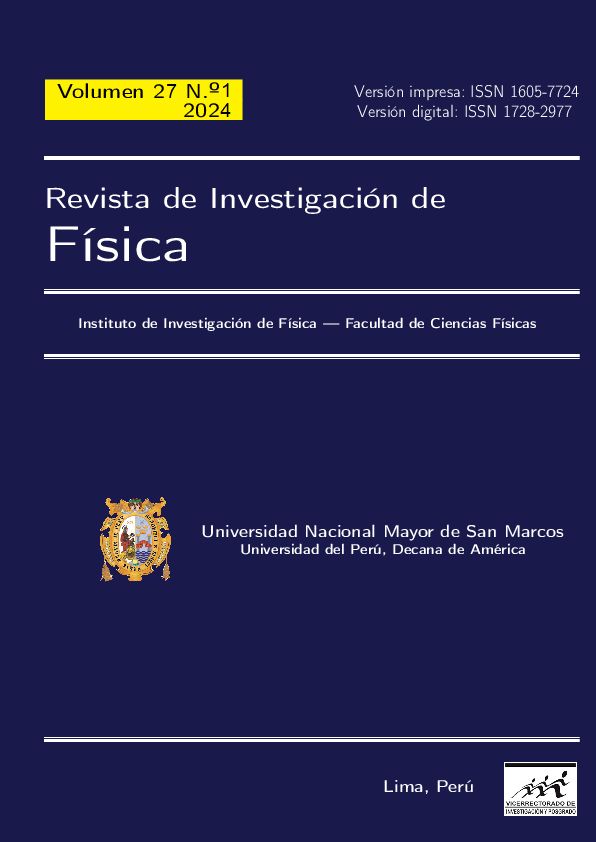Analyzing of the surface deformation of the landslide that affects Cuenca village, Huancavelica, from terrestrial radar data - GBSAR, S1A/B satellite radar images and GPS measurements
DOI:
https://doi.org/10.15381/rif.v27i1.27437Keywords:
SBAS InSAR, FDBP, Cuenca landslideAbstract
Landslides in Peru occur frequently due mainly to conditioning factors such as slope and type of soil, as well as triggering factors like rainfall, earthquakes, and even human activity. In this study, we use geodetic techniques to characterize the surface deformation of a landslide located in Cuenca, Huancavelica, in central Peru. This landslide which started a decade ago, is currently affecting the infrastructure, communication routes, and farmlands of the Cuenca village. In 2014 the landslide produced the damming of the Mantaro river. We process data from two radar sources: the first one consists of synthetic aperture radar (SAR) satellite data from the Sentinel-1 (S1) satellite mission, and the second one consists of data from a terrestrial radar called GBSAR (Ground Based SAR), located 630 m away from the landslide. The data were analyzed covering the period from 2019 to 2023, and were processed with two algorithms used to generate interferograms and time series: Small Baseline Subset InSAR (SBAS InSAR) and Frequency Domain Back Projection (FDBP). The displacements obtained with both SAR techniques were then compared to the displacements of three GPS campaign stations located in the study area, for which we observed displacements of up to 12.5 mm and 12.6 mm, in the CU17 and CU16 stations, respectively. Our results suggest that the SBAS InSAR technique provides suitable results since are in agreement with the GNSS data. However, the results with this technique depends of the line of sight of the satellite with respect of the orientation of the landslide. The values obtained with the GBSAR technique are physically more robust compared with GNSS data, we found displacement as large as 87.54 mm that temporally correlate with the end of the rain season. In summary, GBSAR systems are considered more appropriate for studying landslides, as they can reach a zero baseline and have a higher rate and continuous data acquisition, which can serve as a monitoring tool to detect displacement in landslides.
Downloads
Published
Issue
Section
License
Copyright (c) 2024 Renzo Anchivilca, Juan Villegas-Lanza

This work is licensed under a Creative Commons Attribution 4.0 International License.
THE AUTHORS RETAIN THEIR RIGHTS:
a. The authors retain their trademark and patent rights, as well as any process or procedure described in the article.
b. The authors retain the right to share, copy, distribute, perform and publicly communicate the article published in the Revista de Investigación de Física (for example, place it in an institutional repository or publish it in a book), with an acknowledgment of its initial publication in the Revista de Investigación de Física.
c. The authors retain the right to make a subsequent publication of their work, to use the article or any part of it (for example: a compilation of their works, notes for conferences, thesis, or for a book), provided that they indicate the source. of publication (authors of the work, journal, volume, number and date).






